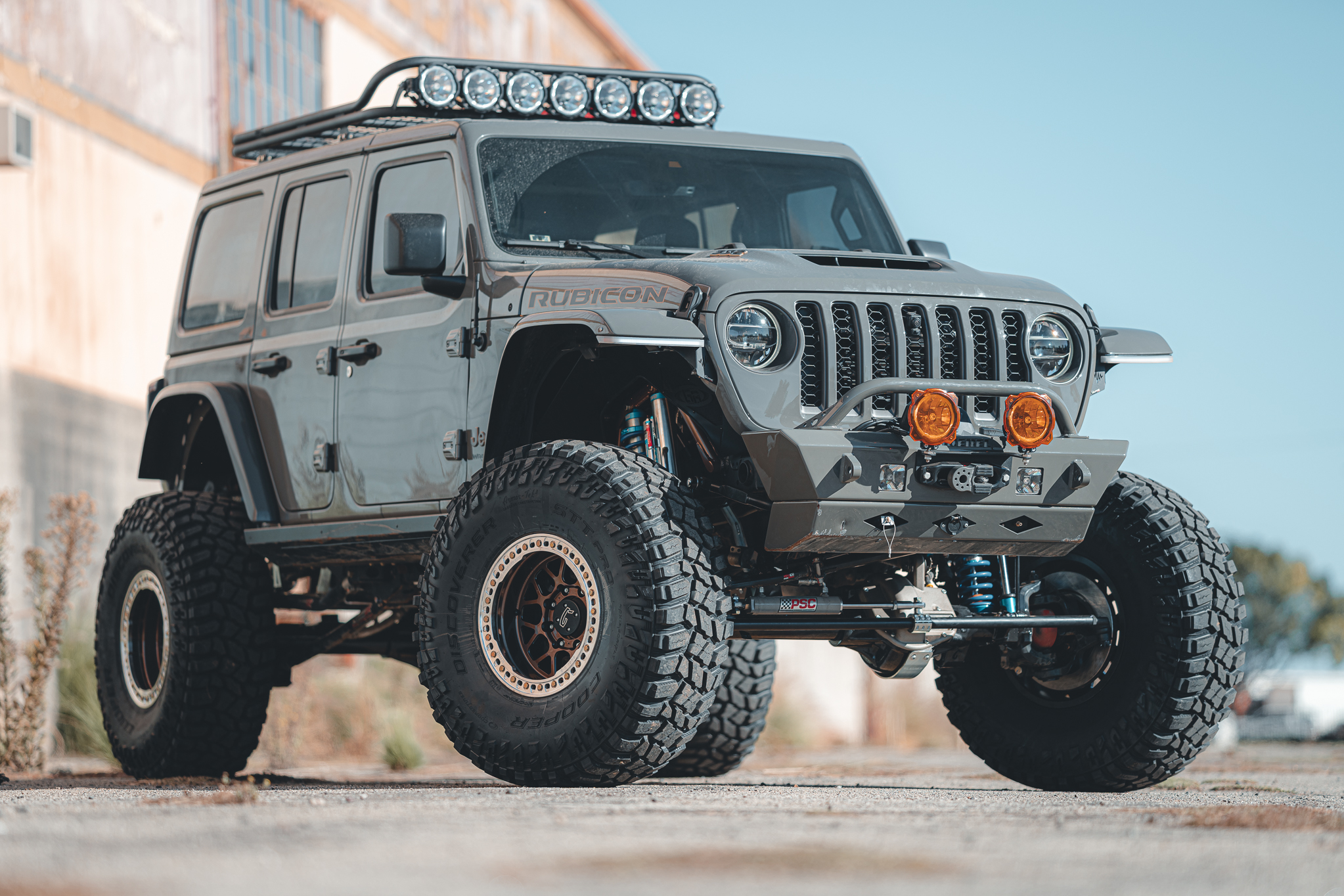
Upgrading your Jeep or truck with 24-inch off-road wheels can provide not just a visual enhancement, but also potentially improve performance in certain off-road scenarios. However, making the switch involves more than just purchasing the wheels and slapping them on. There are eight considerations and steps to take to ensure safety, performance, and longevity of the modification.
Understand the Basics
It’s crucial to differentiate between a wheel and a tire. The wheel is the circular metal component that the tire wraps around. When talking about a “24-inch wheel,” we are referring to the diameter of the wheel, not the tire.
Why Upsize
Larger wheels, when paired with the appropriate tire, can offer better ground clearance, an aggressive look, and can sometimes help with traversing obstacles. However, bigger isn’t always better, and it’s crucial to consider how you use your vehicle.
Consider Wheel and Vehicle Compatibility
Ensure that the 24-inch off-road rims and wheels you select have a load rating compatible with your vehicle’s weight. Trucks and Jeeps, especially when loaded with gear or towing, can exert a lot of weight on wheels. These measurements affect how far inside or outside the wheel and tire sit in relation to the vehicle. Incorrect offset or backspacing can lead to tires rubbing against the body or suspension components, especially during turns or articulation. Your wheel’s bolt pattern must match your vehicle’s hub pattern. It’s not a one-size-fits-all, so always verify compatibility.
1. Tire Selection
With larger wheels, you’ll need to ensure your tires are of the appropriate size to maintain vehicle balance and avoid fender or suspension rub. If you’re off-roading, are you frequenting muddy terrains, rocky paths, or sand dunes? Different tires excel in different conditions. Like wheels, tires also have a load rating. Always ensure it meets or exceeds your vehicle’s requirements.
2. Suspension and Body Modifications
With 24-inch wheels, it’s often necessary to lift the vehicle to accommodate the larger wheel and tire combo, and to maintain full articulation without rubbing. Even with a lift, larger wheels and tires might require more space. Fender trimming or aftermarket fender flares can provide the necessary clearance. After making changes to your suspension, always have an alignment done to ensure even tire wear and proper handling.
3. Potential Performance Impacts
Larger wheels can reduce acceleration due to the increased rotational mass. Bigger wheels and tires usually mean more weight, which can decrease fuel efficiency. Heavier wheels can impact braking performance. It might be worth investing in an upgraded braking system if you’re making significant changes to your wheel size.
4. Maintenance and Monitoring
More frequent inspections of your wheels, tires, and suspension components are vital after modifying. Look for signs of uneven wear, rubbing, or any loose parts. Maintaining the right tire pressure is crucial. Incorrect pressure can lead to decreased performance, reduced fuel efficiency, and premature tire wear. Large wheels can sometimes be harder to balance. Regularly check and ensure they are balanced to avoid vibrations, which can lead to premature wear on suspension parts and an uncomfortable ride.
5. Practical Tips for Installation
While enthusiasts might be tempted to do the installation at home, it’s recommended to have the wheels and any associated modifications professionally installed. After installation, consider a break-in period where you drive more conservatively to ensure everything is working harmoniously. Wheels should be retorqued to the manufacturer’s specifications at regular intervals.
6. Mounting Equipment
Use high-quality mounting equipment. A bead blaster can effectively seat the bead of large tires onto the rim. Proper equipment ensures an even mount, reduces the risk of damaging the wheel or tire, and provides safety for the installer.
7. Adapt Driving Style and Ride Quality Changes
Larger tires can affect stopping distances and cornering capabilities. Be aware of these changes and adapt your driving style accordingly, especially when transitioning from on-road to off-road environments. Larger wheels and tires can change the way your vehicle feels on the road. While the aggressive tread patterns of off-road tires provide traction on rugged terrains, they might be noisier and less smooth on highways.
8. Legal Considerations Realign Your Vehicle
In some regions, modifications, including changing wheel size, can affect the legal status of your vehicle. Check with local regulations and ensure your Jeep or truck remains compliant after the changes. Once you’ve got those large wheels and tires mounted, it’s wise to have an alignment done. This will ensure that your tires wear evenly and your vehicle handles predictably, especially when off-roading.
Conclusion
While the appeal of mounting 24-inch off-road wheels on your Jeep or truck is undeniable, it’s a modification that should be approached with careful consideration and knowledge. Understanding the mechanics, ensuring compatibility, and acknowledging potential performance impacts will ensure that your off-road experience is both enjoyable and safe. Always prioritize regular maintenance and checks to keep your vehicle in top shape and to derive the maximum benefit from your new wheels. Whether for aesthetics, function, or a mix of both, when done right, upsizing your wheels can significantly enhance your off-road experience.

